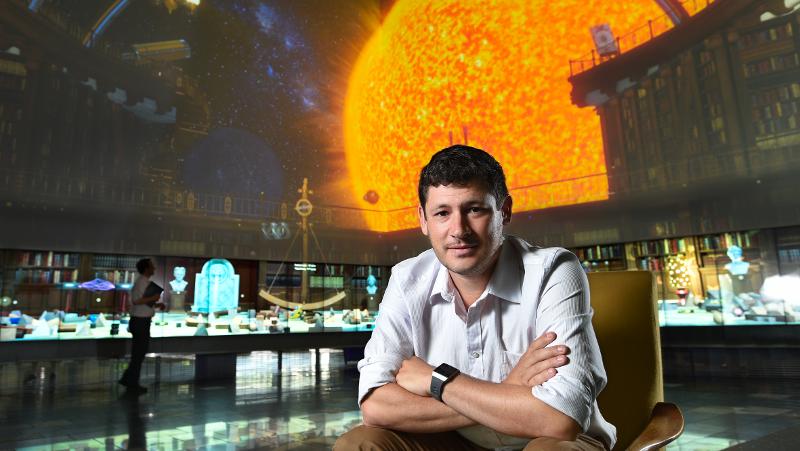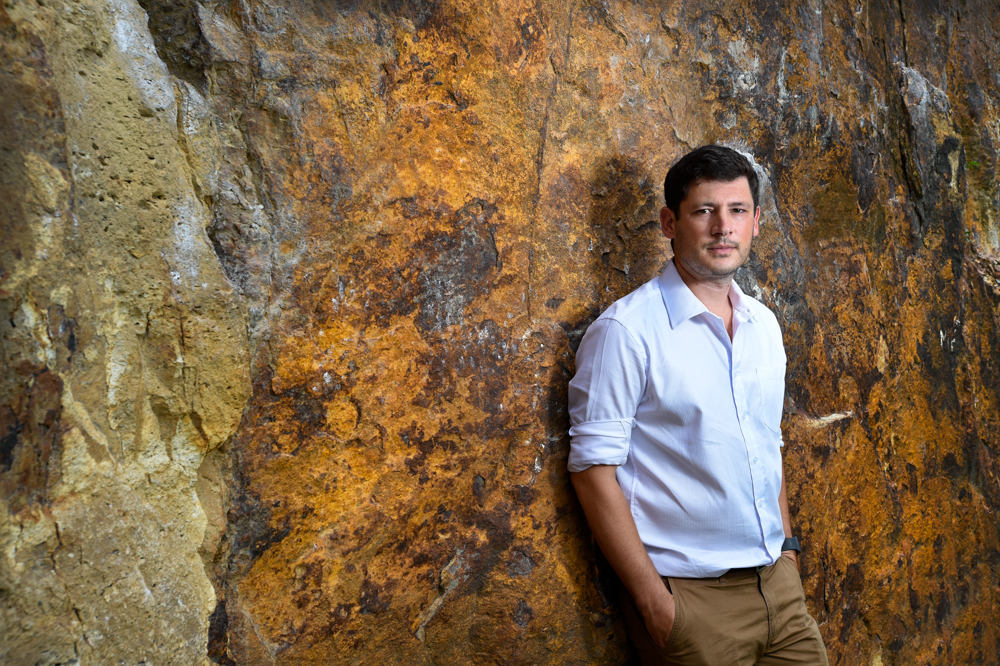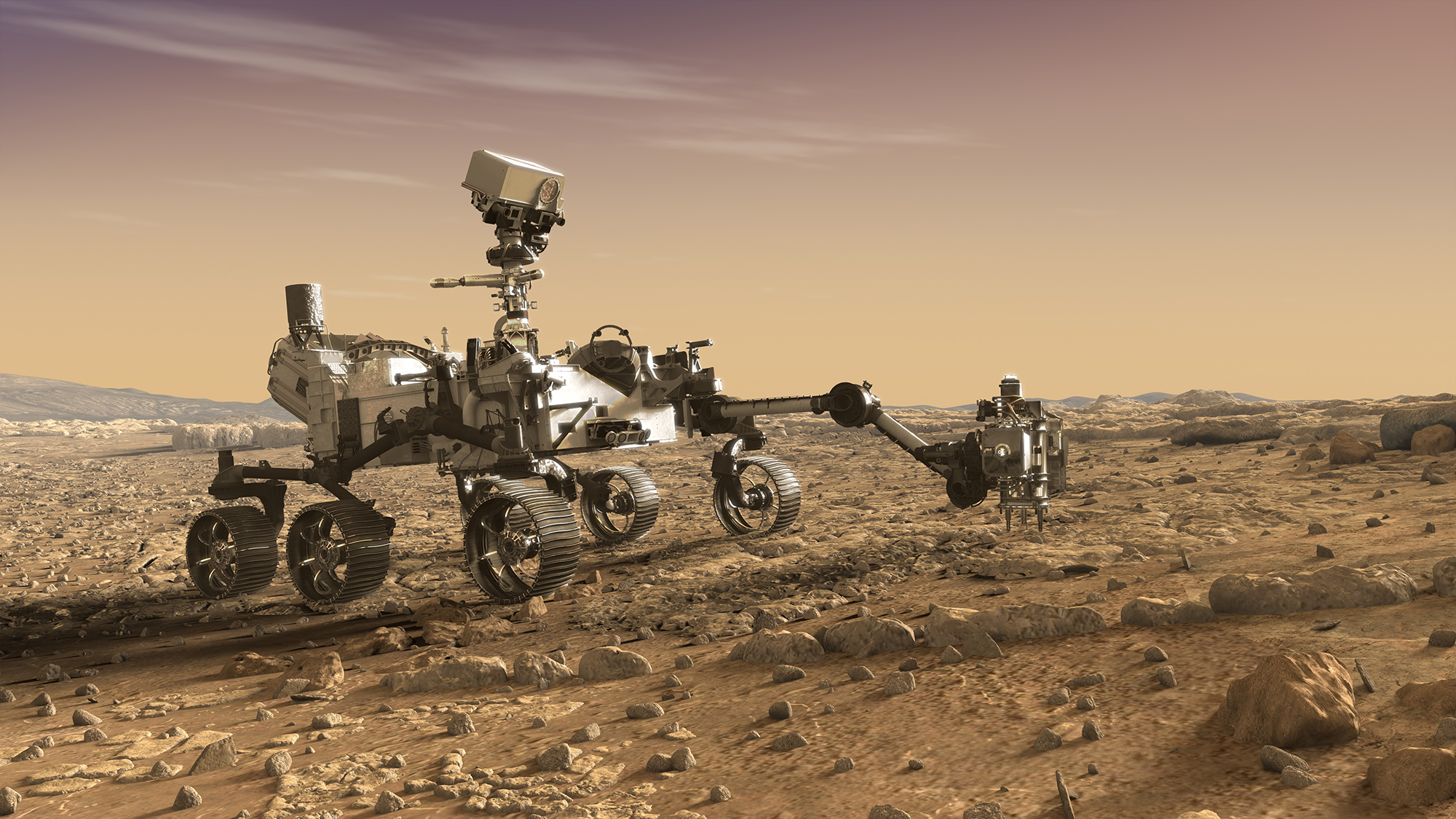
When the Mars 2020 Rover lands on the red planet and begins its exploration for signs of past life, QUT’s Dr David Flannery will be part of the team operating one of its instruments remotely back here on Earth.
Previously an Adjunct Professor, Dr Flannery has joined QUT as a research fellow in the in the to develop capabilities in geology and astrobiology.
For the past four-and-a-half years he worked at NASA’s Jet Propulsion Laboratory (JPL) in California, and remains a member of the NASA Mars 2020 Rover Mission Science Team and a co-investigator of one of the exploration instruments that the rover will be equipped with – an X-ray fluorescence spectrometer known by its acronym PIXL (Planetary Instrument for Lithochemistry) which will map the elemental composition of Mars rocks in features as small as a grain of sand.
He’s been working closely with Dr Abigail Allwood, QUT’s 2015 Outstanding Alumnus of the Year, who leads the PIXL team. The PIXL’s job is to look for signs of ancient microbial life in rocks, applying the techniques and knowledge that Dr Allwood, Dr Flannery and other scientists have gained by studying similarly aged rocks and evidence of microbes on Earth.

The rover is scheduled to land in the geologically rich, 45-kilometre wide Jezero Crater which was once flooded with water – a key prerequisite for life – and has landforms that date back to the earliest phase of Mars’ history several billion years ago.
“One of the things we’re hoping to find are macroscopic biosignatures of past life that represent fossilised microbes,” Dr Flannery said.
“One of the best known microbial biosignatures are stromatolites, which form when microbes get together in a mat, and typically over long periods of time build up these larger structures as the mat precipitates minerals, traps bits of sand, and cements them together.
“So if we saw these stromatolites on Mars we would be really excited. It is a definite possibility because there are elements of that crater lake that could preserve fossils like this.”

PIXL is also equipped with a camera to take photos of rocks and soil textures to pinpoint the locations of rock chemistry measurements.
Once scientists have identified rock targets of interest, the rover’s drill will collect core samples. These will be stored on Mars’ surface until they can be retrieved by a future space mission.
“That is the holy grail,” Dr Flannery said. “To get the samples back to laboratories on Earth and put them under all of the analytical instruments that we have.
“Collecting the samples is not as easy a task as it sounds. It is quite an engineering challenge to make sure there is no organic contamination of the samples.”
Dr Flannery recently spent time at NASA’s JPL with the Mars 2020 Science Team rehearsing operations procedures for the instruments.
The rover is due to launch in July next year and to touch down on Mars around February 2021, and Dr Flannery hopes other QUT academics and students in a range of areas, including robotics and engineering, will get involved with Mars exploration.
Applications are now open for a working with Dr Flannery that involves studying analogues for Martian biosignatures that are preserved in ancient Earth rocks.
He will be continuing his Earth geology research at QUT, having recently published a paper in on some of the oldest examples of the sedimentary features known as ooids, which occur in environments dominated by microbes and which can provide another type of evidence for life on early Earth – or Mars.
“I studied geology because I like being outdoors and rocks are actually quite interesting,” he said. “I like to tell students that the history of the Earth is written in the book of geology.
“If you learn to read it, everywhere you go there is a tremendous wealth of information available to you.”
Dr Flannery also hopes to energise Australia’s embryonic space industry.
“There is no reason that a developed nation the size of Australia should not be contributing to international space missions.
“With the formation of the Australian Space Agency, we are now a step closer to directly participating in solar system exploration.”








